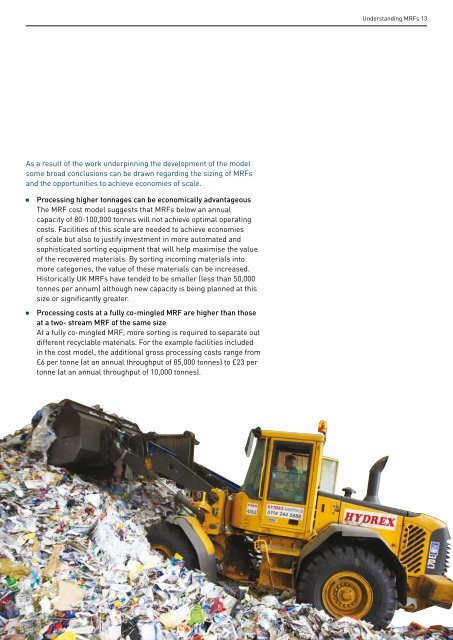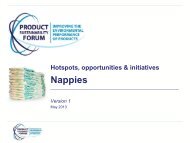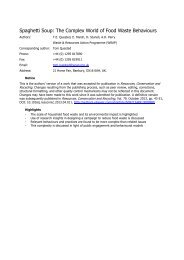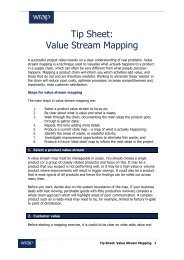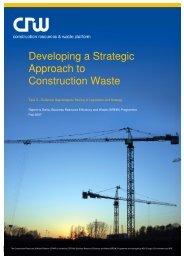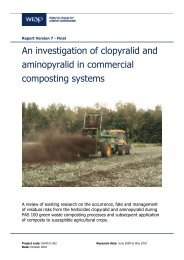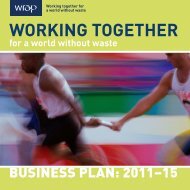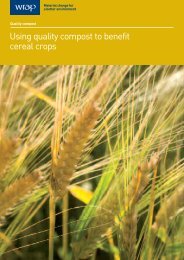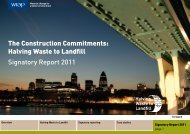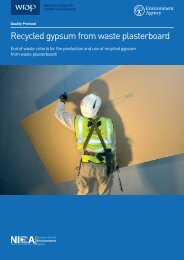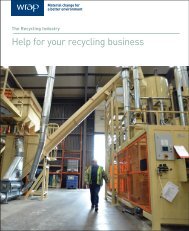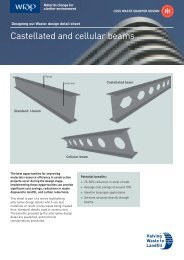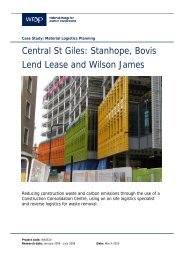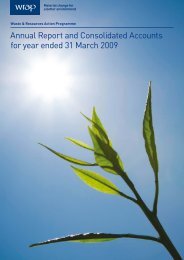Recovering value from MRFs (754.52 KB) - Wrap
Recovering value from MRFs (754.52 KB) - Wrap
Recovering value from MRFs (754.52 KB) - Wrap
- No tags were found...
You also want an ePaper? Increase the reach of your titles
YUMPU automatically turns print PDFs into web optimized ePapers that Google loves.
Understanding <strong>MRFs</strong> 13As a result of the work underpinning the development of the modelsome broad conclusions can be drawn regarding the sizing of <strong>MRFs</strong>and the opportunities to achieve economies of scale.Processing higher tonnages can be economically advantageousThe MRF cost model suggests that <strong>MRFs</strong> below an annualcapacity of 80-100,000 tonnes will not achieve optimal operatingcosts. Facilities of this scale are needed to achieve economiesof scale but also to justify investment in more automated andsophisticated sorting equipment that will help maximise the <strong>value</strong>of the recovered materials. By sorting incoming materials intomore categories, the <strong>value</strong> of these materials can be increased.Historically UK <strong>MRFs</strong> have tended to be smaller (less than 50,000tonnes per annum) although new capacity is being planned at thissize or significantly greater.Processing costs at a fully co-mingled MRF are higher than thoseat a two- stream MRF of the same sizeAt a fully co-mingled MRF, more sorting is required to separate outdifferent recyclable materials. For the example facilities includedin the cost model, the additional gross processing costs range <strong>from</strong>£6 per tonne (at an annual throughput of 85,000 tonnes) to £23 pertonne (at an annual throughput of 10,000 tonnes).


